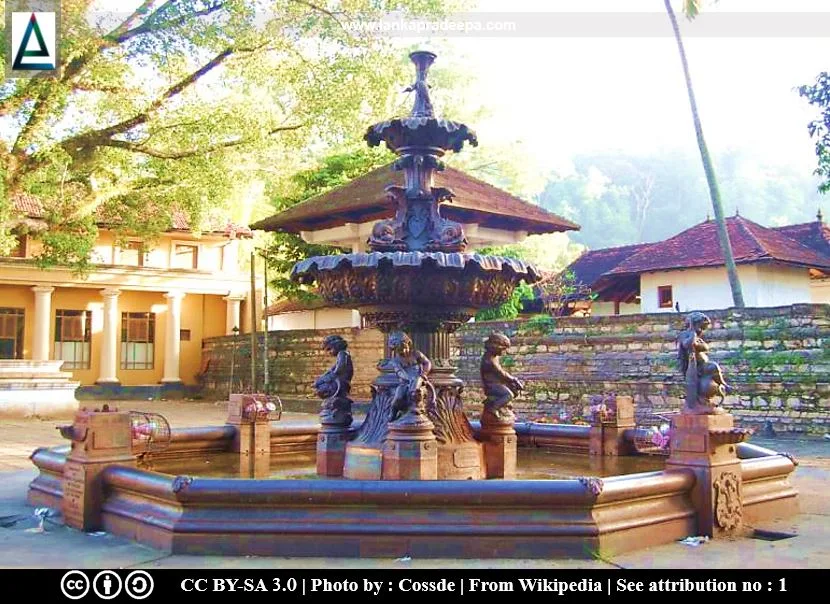
|
Kandy Old Fountain |
Kandy Old Fountain, also known as Coffee Flower Fountain or the Fountain of Prince of Wales (Sinhala: මහනුවර පැරණි වතුර මල, Nuwara Wathura Mala”), is a water spout erected in the city of Kandy, Sri Lanka. It was built by the Coffee Planters of Ceylon to commemorate the visit of Prince of Wales, Edward VII (1841-1910) to Sri Lanka in 1875 (Biyanwila, 2019). The fountain is located in the Dewa Veediya near the main entrance to the Temple of the Tooth in Kandy
History
Shortly after the British occupation of Sri Lanka (British Ceylon 1815-1948), coffee became the main plantation in the country (Abeywardana, 2004). At the time Sri Lanka was the largest coffee producer in the world. When the Prince of Wales announced his plan to visit Sri Lanka, the coffee planters of the country erected this fountain to commemorate this event.
The plaque fixed onto the fountain can be read as follows,
"Erected by the Coffee Planters of Ceylon in commemoration of the visit of H.R.H. the Prince of Wales to Kandy, December 1875."
The year 1870 was crucial for Ceylon's coffee plantations and as they had reached their peak during this period (Biyanwila, 2019). However, the fungal disease Hemileiavastatrix devastated them, leading to the complete decline of coffee cultivation, which was eventually replaced by tea (Biyanwila, 2019).
The Fountain
Built in a form of a coffee flower, the fountain is said to have been manufactured in a factory in Glasgow, a port city on the River Clyde in Scotland's western Lowlands. A plaque with the name "George Smith & Co. and Sun Foundry of Glasgow" is still found attached to the fountain giving clear evidence that the fountain was made up of steel in Glasgow (Biyanwila, 2019). It is said that the imported parts of the fountain were assembled in Kandy and activated for the first time during the visit of the prince.
A Similar Fountain in Scotland
There is an identical twin fountain in the town of Dumfries in Scotland. It is said that there was a landmark at this place which unveiled in 1851 to commemorate the piping of clean water from nearby Lochfoot into the town following cholera epidemics in the 1830s and 1840s. However, it was replaced in 1882 with the present fountain.
The plaque fixed onto that fountain can be read as follows,
"Erected December 1882 on the site of the original fountain. The introduction of water from Lochfoot into Dumfries and Maxwelltown 21st October 1851"
A Protected Monument
The old fountain located at the junction of Temple Street and Deva Veediya in Kandy town in the Gangawata Koralaya Divisional Secretary’s Division is an archaeological protected monument, declared by a government Gazette notification published on 8 July 2005.
Related Posts
Read Also
References
Books, Government Gazette Notifications, Journal Articles
1) Abeywardana, H.A.P., 2004. Heritage of Kandurata: Major natural, cultural and historic sites. Colombo: The Central Bank of Sri Lanka.
pp.48-49.
2) Biyanwila, A., 2019. Art of a Heritage: An Analysis of the Ornamentation and the Foreign Artistic Influences of the Coffee Planters' Fountain in Kandy. Ancient Ceylon. Journal of the Department of Archaeology, Sri Lanka, (27), pp. 31–42.
3) The Gazette of the Democratic Socialist Republic of Sri Lanka. No: 1401. 8 July 2005.
Location Map
Dynamic Google Map
Attribution
To Whom
1) Kandy old fountain by Cossde is licensed under CC BY SA 3.0

